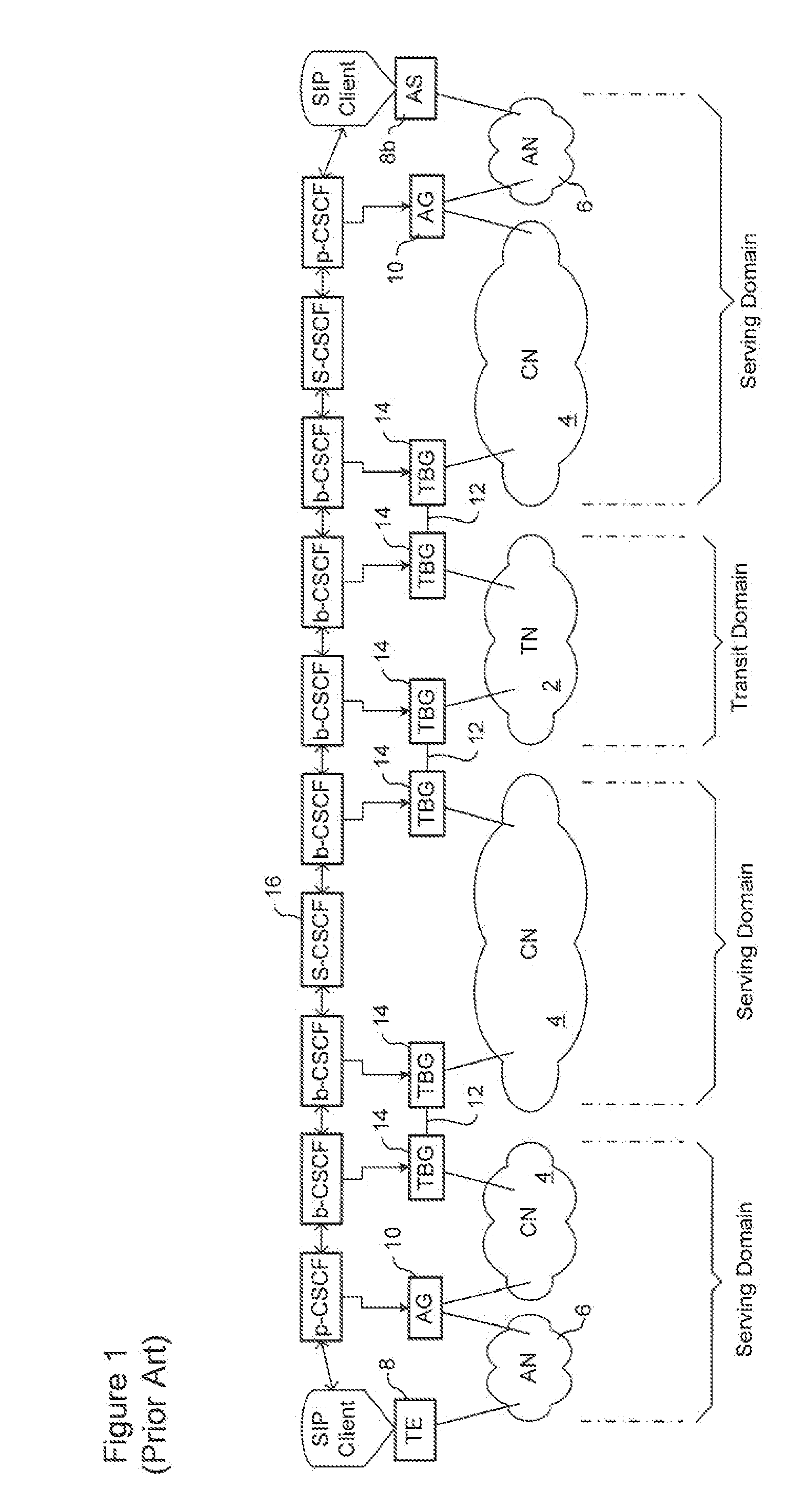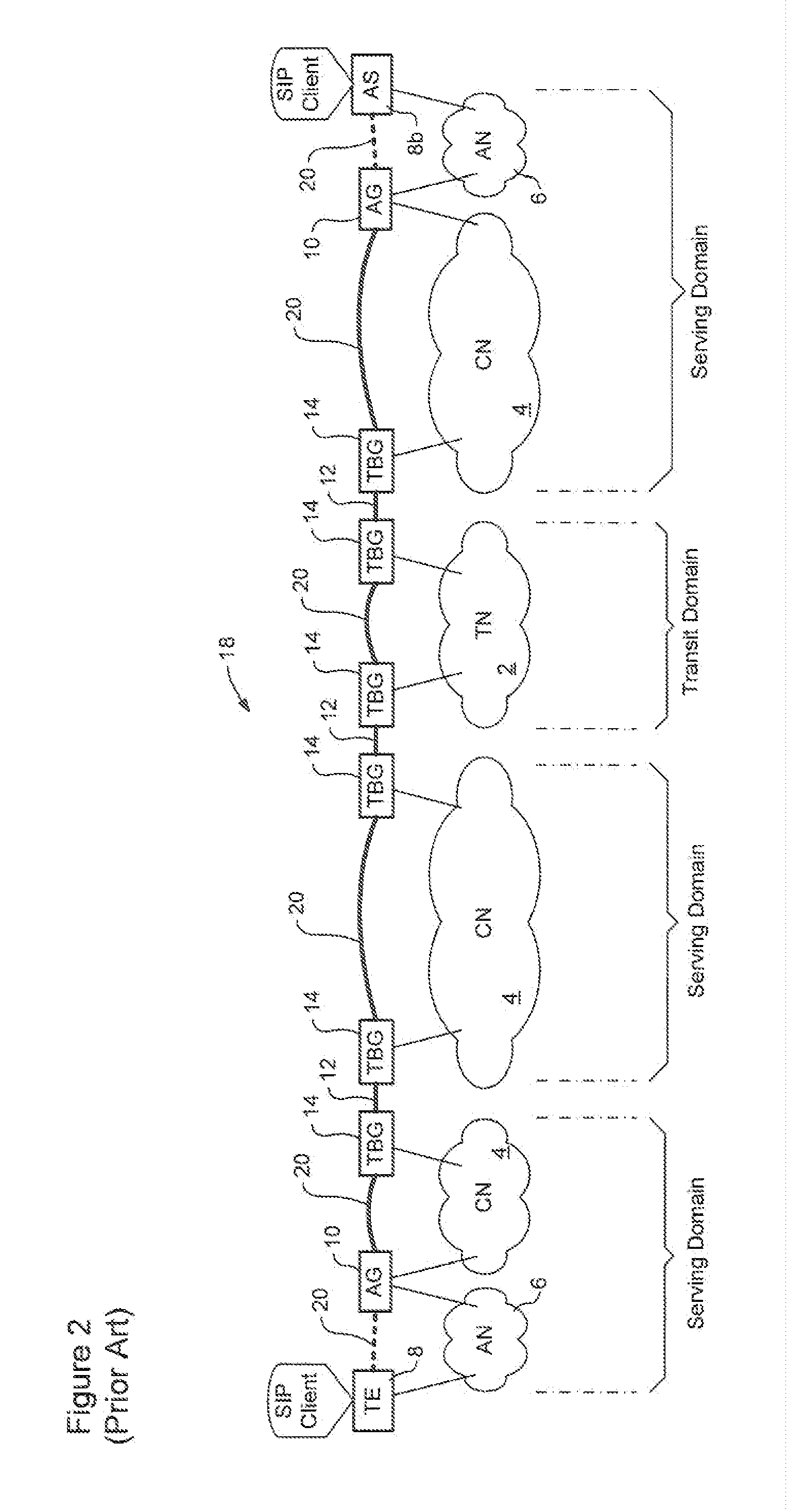Pinning the route of IP bearer flows in a next generation network
a next-generation network and internet protocol technology, applied in data switching networks, data switching details, multiplex communication, etc., can solve the problems of preventing proper billing settlement and deployment of ngn
- Summary
- Abstract
- Description
- Claims
- Application Information
AI Technical Summary
Problems solved by technology
Method used
Image
Examples
example use
[0055]A traveling enterprise employee uses a VPN client to establish an IPSec tunnel back from her laptop to her Enterprise's VPN server so that she can access the facilities of the enterprise network, including its IP PBX to make and receive phone calls. If this IPSec tunnel were established over the best effort Internet the delays, litter and loss rate of the encrypted packets would be uncertain and could be inadequate to support a VoIP session between the soft client on her laptop and the enterprise IP PBX. To get guaranteed QoS suitable for voice packets in the IPSec tunnel requires that the IPSec tunnel be treated as a generic bearer.
[0056]Operators supporting generic bearers may choose to tariff a limited number of bandwidths (transfer capacity) for each traffic class, am then to give each each combination of transfer capacity and traffic class a standard name. An example might be:
[0057]votel=100 kb / s minimum delay, minimum jitter, tariff $0.02 per minute,
[0058]vidtel=1 Mb / s m...
example
[0122]A typical example of the use of this invention would be for a legacy (i.e. pre SIP) streaming video service. A video service provider may wish to deliver streaming video at a quality level that is greater than most access / attachment networks can reliably support at the “best effort” level of service. Once this invention is deployed in the NGN, the Video Service Provider would upgrade his servers to be SIP capable (including being able to generate Serving Gateway URIs) and then negotiate IMS service from a local operator. The local operator will set a tariff, which may be per movie, or time based, or per megabyte transferred at a specific QoS class. This form of the tariff will depend on competitive factors, and will probably be lower for sessions that remain “on-net” (the client is attached to the operators own network) than for sessions where the operator has to share the fee with one or more other operators. The tariff may also be specific to the type of attachment network t...
PUM
 Login to View More
Login to View More Abstract
Description
Claims
Application Information
 Login to View More
Login to View More - R&D
- Intellectual Property
- Life Sciences
- Materials
- Tech Scout
- Unparalleled Data Quality
- Higher Quality Content
- 60% Fewer Hallucinations
Browse by: Latest US Patents, China's latest patents, Technical Efficacy Thesaurus, Application Domain, Technology Topic, Popular Technical Reports.
© 2025 PatSnap. All rights reserved.Legal|Privacy policy|Modern Slavery Act Transparency Statement|Sitemap|About US| Contact US: help@patsnap.com



